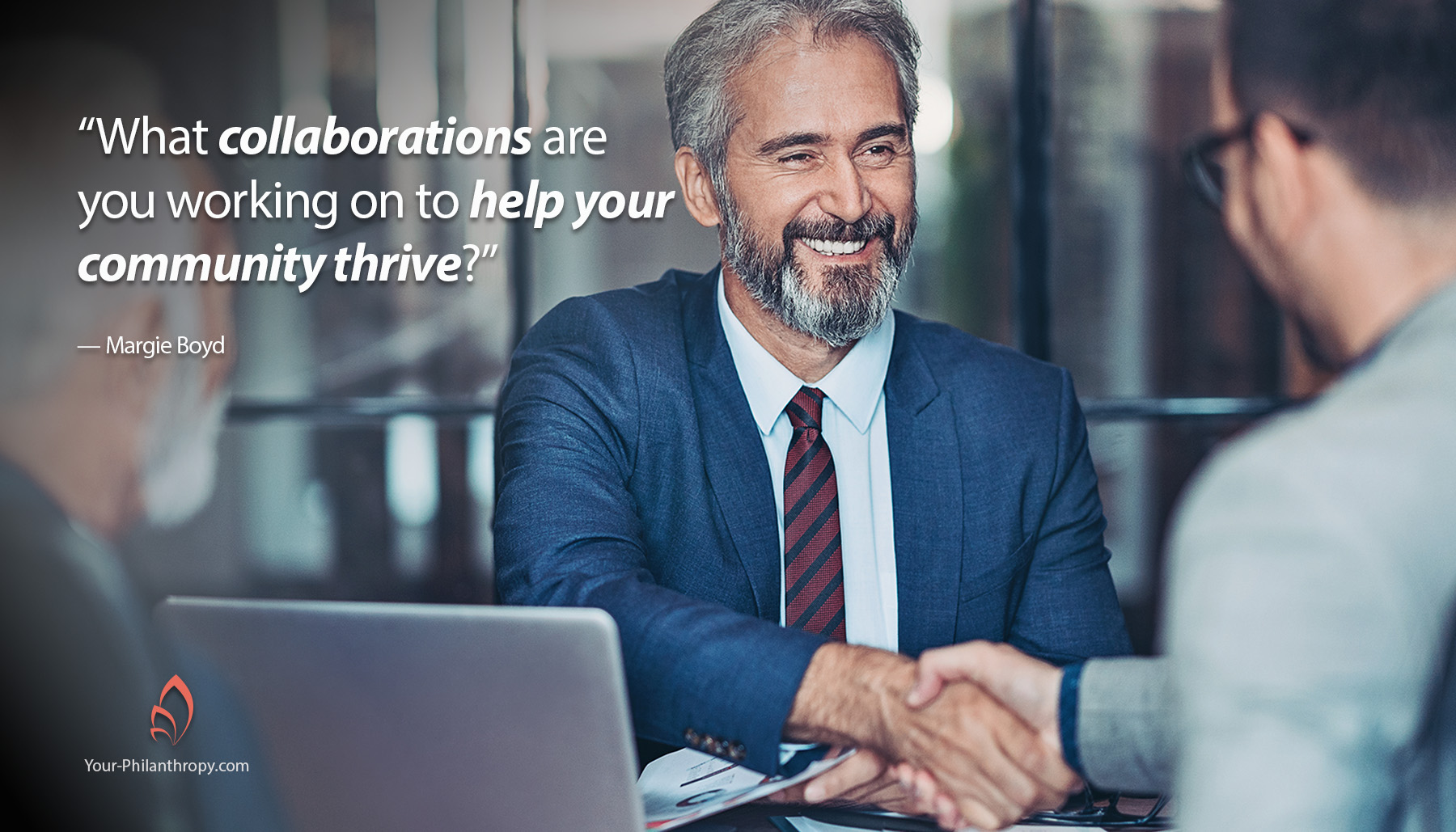By Margie Boyd, Executive Vice President, Your Philanthropy
When I first moved to East Texas over 20 years ago, I remember jumping online and visiting the local chamber of commerce community calendar to see what was happening in our area in the coming months. I had small children so finding family-friendly events to attend was high on my priority list.
I was amazed to find the community calendar loaded with fun yet cause-connected events. It struck me how the entire social calendar seemed to be built around supporting the nonprofit community. I’m sure this was not a new phenomenon, but for me, it was the first time I’d really paid attention. Since then, I’m convinced it’s what can make a community thrive.
It wasn’t long before I found myself working and serving in the nonprofit space, connecting with the community, fundraising, hosting events and even calling the chamber to list my events on their calendar. It was a full-circle moment.
Today, working in the philanthropic space with multiple private foundations, I understand the value of both sides of the work. That is why our team at Your Philanthropy is a bridge between both sectors. We have all worked on both sides of the aisle. It gives us our edge and the ability to see from the grantee and grantor’s perspective.
With many private foundations in our area, we especially enjoy watching when they come together on the local level with place-based philanthropy.
According to a recent Exponent Philanthropy blog, “When smaller, place-based foundations collaborate and align their work, they provide unique value to local communities and nonprofits.” These partnerships don’t have to be formal. They can even occur naturally simply because of their location and mission to benefit the same community.
Examples of place-based philanthropy
A local hospital recently requested two pieces of essential equipment for their NICU from one of our foundation clients. Because the combined cost of the equipment was beyond this foundation’s average gift size, we helped facilitate an informal collaboration between another one of our local clients. Each foundation wound up funding one piece of the equipment which was more in line with their giving goals. In the end, the local community ultimately won. Those who find themselves in an emergency with their infant will have access to both pieces of life-saving equipment.
The recent establishment of a local medical school is another shining example of place-based philanthropy in our community. One local foundation gave an initial gift of $80 million to launch the medical school which in turn inspired another local foundation to donate $4 million to cover tuition for the entire inaugural class. It wasn’t a formal collaboration, but again, a big win for the community who will benefit for generations with jobs and medical care.
Dawn Franks wrote an article highlighting several more examples. “The Children’s Park is another bright example of a philanthropy partnership. Again, years in the making and starting with the dream of one mother, Jennifer Carson, along with friends, supporters, and philanthropists and eventually the city, a beautiful place of serenity and memories was created for all to enjoy. It all started with one dream, one vision of a future, but took a partnership.”
Below are a few suggestions from Exponent Philanthropy members in taking the first steps toward funders collaborating in place-based philanthropy.
First steps to learning and working together
- Start with one conversation. Reach out to other foundation members in your town or city to have a conversation.
- Ask people what they want to talk about. Ask your peers about their grantee partners’ priority needs.
- Consider inviting more funders. Invite others to the table or keep it small to develop relationships.
- Rotate hosting and facilitation. One person can volunteer to schedule meetings, for topics, create agenda’s and facilitate to keep conversations focused.
- Consider flexible ways to participate. Some funders may not be able to attend all meetings or participate in conversations but may help with other resources like meeting space, grantmaking data, or lending their name to certain projects.
- Be open to new opportunities. Short-term and long-term projects can emerge from informal conversations which can spark or incubate new projects or partnerships.
What collaborations are you working on to help your community thrive? Take the first step in maximizing your giving goals. Start a conversation. Let us know how we can help.
Like it. Use it. Share it. Comment below.


0 Comments